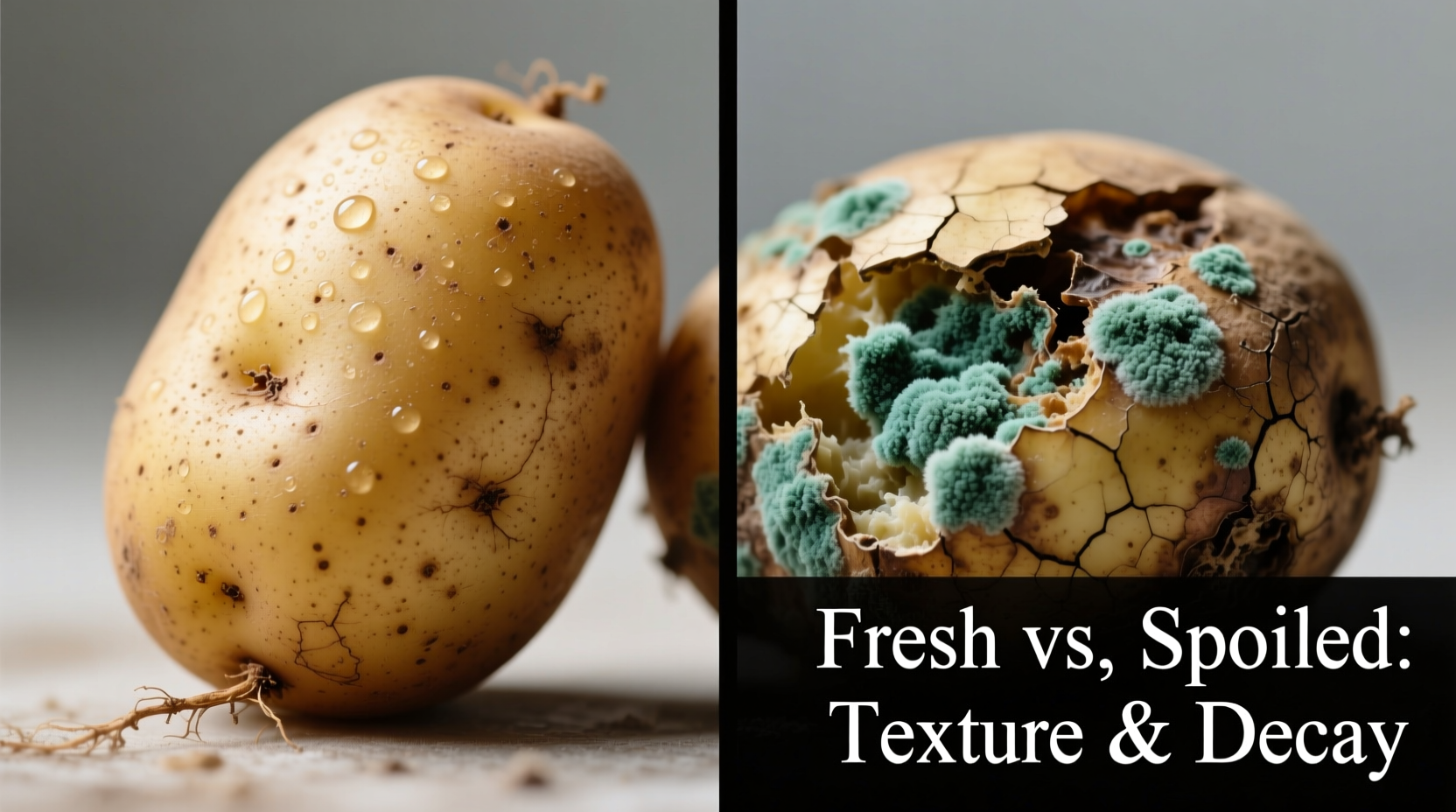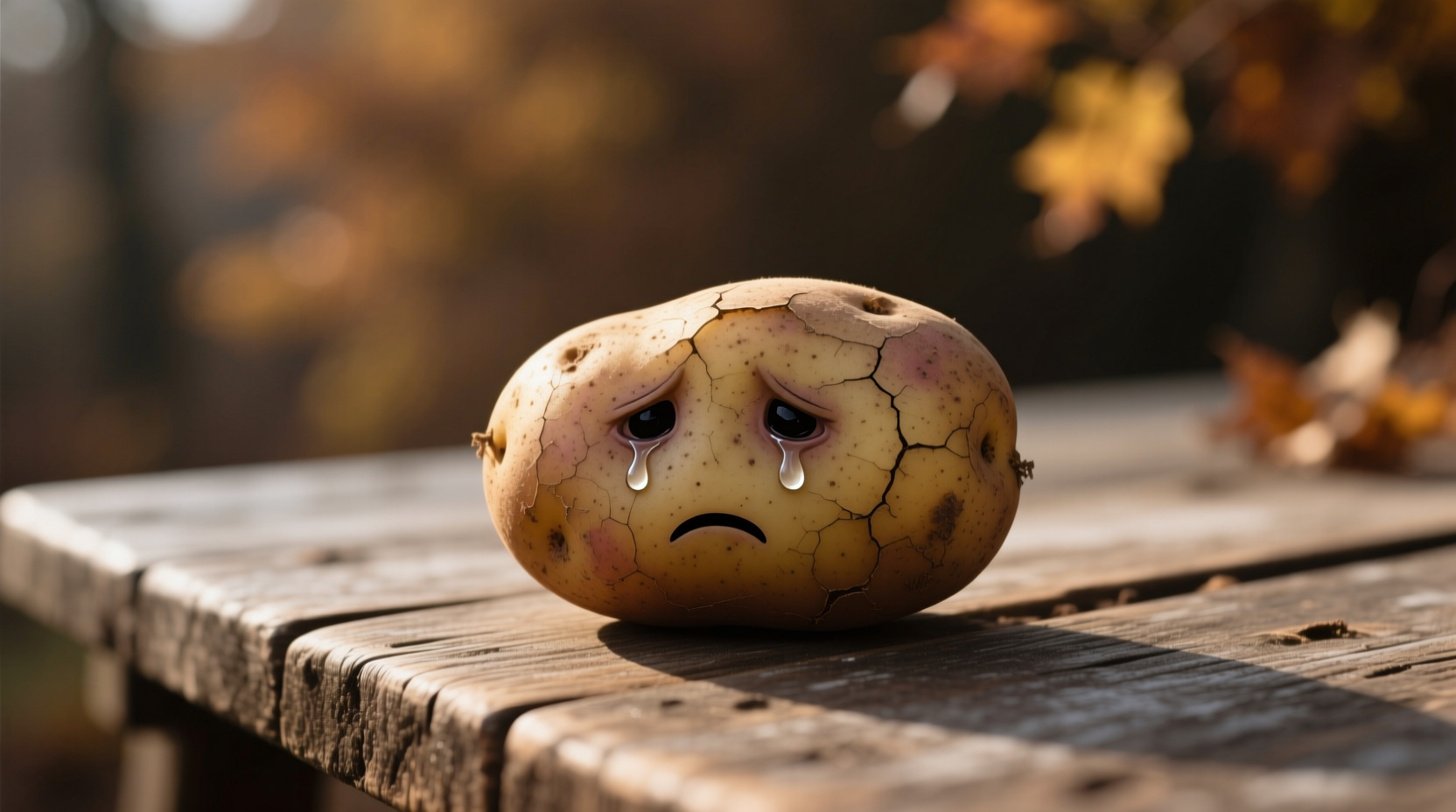Ever searched for \"sad potato\" and wondered why you're not finding clear answers? You're not alone. This confusing term sends many home cooks and gardeners down a rabbit hole of misinformation. Let's clear up the mystery once and for all and help you identify, prevent, and address the real issue behind what people commonly call \"sad potatoes\"—potatoes that have deteriorated in quality.
Understanding the \"Sad Potato\" Confusion
When users search for \"sad potato,\" they're typically encountering one of two scenarios: a misspelling of \"seed potato\" or a description of potatoes that have visibly declined in quality. Seed potatoes are specifically grown for planting rather than consumption, while \"sad\" potatoes refer to those that have become soft, sprouted excessively, or developed mold.
The confusion often stems from voice search errors or autocorrect failures. \"Seed\" and \"sad\" sound similar enough that speech recognition software sometimes mixes them up. This common misinterpretation has led to numerous frustrated searches from gardeners looking for planting information and cooks wondering why their potatoes look unappetizing.
When Potatoes Actually Become \"Sad\": Signs of Decline
True \"sad potatoes\" show clear physical indicators that they've passed their peak freshness. These aren't just cosmetic issues—they signal potential food safety concerns and diminished culinary value. Recognizing these signs helps you make informed decisions about storage, usage, or disposal.
| Condition | Visual Indicators | Edibility Status | Recommended Action |
|---|---|---|---|
| Early Spoilage | Slight softening, minor discoloration | Safe if trimmed | Cut away affected areas; use immediately |
| Moderate Decay | Multiple soft spots, noticeable shriveling | Risky; discard | Compost or discard; not suitable for consumption |
| Advanced Spoilage | Extensive mold, foul odor, liquid seepage | Dangerous; discard | Dispose immediately in sealed container |
| Excessive Sprouting | Long sprouts (>1 inch), green skin patches | Potentially unsafe | Discard if green; trim sprouts if minimal |
This evidence-based assessment aligns with USDA food safety guidelines, which emphasize that significant softening or mold growth indicates potatoes have entered a state where consumption poses health risks. The FDA's food handling guidelines specifically note that potatoes with extensive sprouting or green discoloration contain elevated levels of solanine, a naturally occurring toxin.

Preventing Your Potatoes from Becoming \"Sad\"
Proper storage transforms how long your potatoes maintain their quality. Unlike many vegetables, potatoes have specific environmental needs that differ from common refrigerator conditions. Understanding these requirements prevents premature spoilage and extends usability.
Optimal storage conditions:
- Temperature: 45-50°F (7-10°C) - cooler than room temperature but warmer than refrigeration
- Humidity: 90-95% - high humidity prevents moisture loss
- Light exposure: Complete darkness - prevents greening and solanine production
- Ventilation: Moderate airflow - prevents moisture buildup
Avoid storing potatoes near onions, as the gases onions emit accelerate potato sprouting. The University of Idaho's Potato Storage Guidelines confirm that proper storage can extend potato shelf life by 4-6 weeks compared to improper conditions.
Rescuing Marginally \"Sad\" Potatoes
Not all slightly deteriorated potatoes need immediate disposal. Many can be salvaged with proper handling, reducing food waste while maintaining safety standards. The key is assessing the extent of deterioration and taking appropriate corrective action.
When to save versus discard:
- Save: Potatoes with minor surface blemishes, shallow sprouts under 1 inch, or slight softening in small areas
- Discard: Potatoes with deep soft spots, extensive mold, strong odors, or significant greening
For salvageable potatoes, remove all sprouts and green areas with a deep cut (at least 1/4 inch below affected areas). The University of Minnesota Extension confirms that properly trimmed potatoes remain safe for consumption, though flavor and texture may be slightly compromised.
Creative Uses for Less-Perfect Potatoes
Before discarding potatoes that show early signs of decline, consider these culinary applications that transform imperfect produce into delicious dishes. The cooking process often masks minor imperfections while utilizing the remaining quality of the potato.
Best applications for marginally compromised potatoes:
- Mashed potatoes - hides surface imperfections while utilizing the starchy interior
- Potato soup - transforms slightly soft potatoes into creamy texture
- Hash browns or home fries - the cooking process improves texture of marginally soft potatoes
- Stocks and broths - adds flavor even when potatoes aren't suitable for standalone use
Professional chefs routinely repurpose potatoes showing early signs of decline into these applications, maximizing ingredient usage while maintaining food safety standards. This practice aligns with the culinary industry's growing emphasis on reducing food waste without compromising quality.
When to Consult a Professional
While most potato quality issues can be addressed at home, certain situations warrant professional advice. If you're growing potatoes and notice widespread issues across your crop, agricultural extension services can provide valuable guidance. The USDA's Agricultural Research Service offers resources for both commercial growers and home gardeners experiencing persistent potato quality problems.
For food safety concerns about commercially purchased potatoes, contacting the retailer or manufacturer with specific product information often yields helpful responses. Many major grocery chains have quality assurance departments that investigate such concerns to maintain product standards.
Conclusion: Keeping Potatoes Happy and Healthy
The mystery of the \"sad potato\" ultimately comes down to proper identification, storage, and usage. By understanding what people actually mean when they use this term and implementing appropriate storage and handling techniques, you can significantly reduce food waste while ensuring the potatoes you use are both safe and delicious. Remember that minor imperfections don't necessarily mean disposal—many slightly compromised potatoes can be transformed into excellent dishes with the right approach.











 浙公网安备
33010002000092号
浙公网安备
33010002000092号 浙B2-20120091-4
浙B2-20120091-4